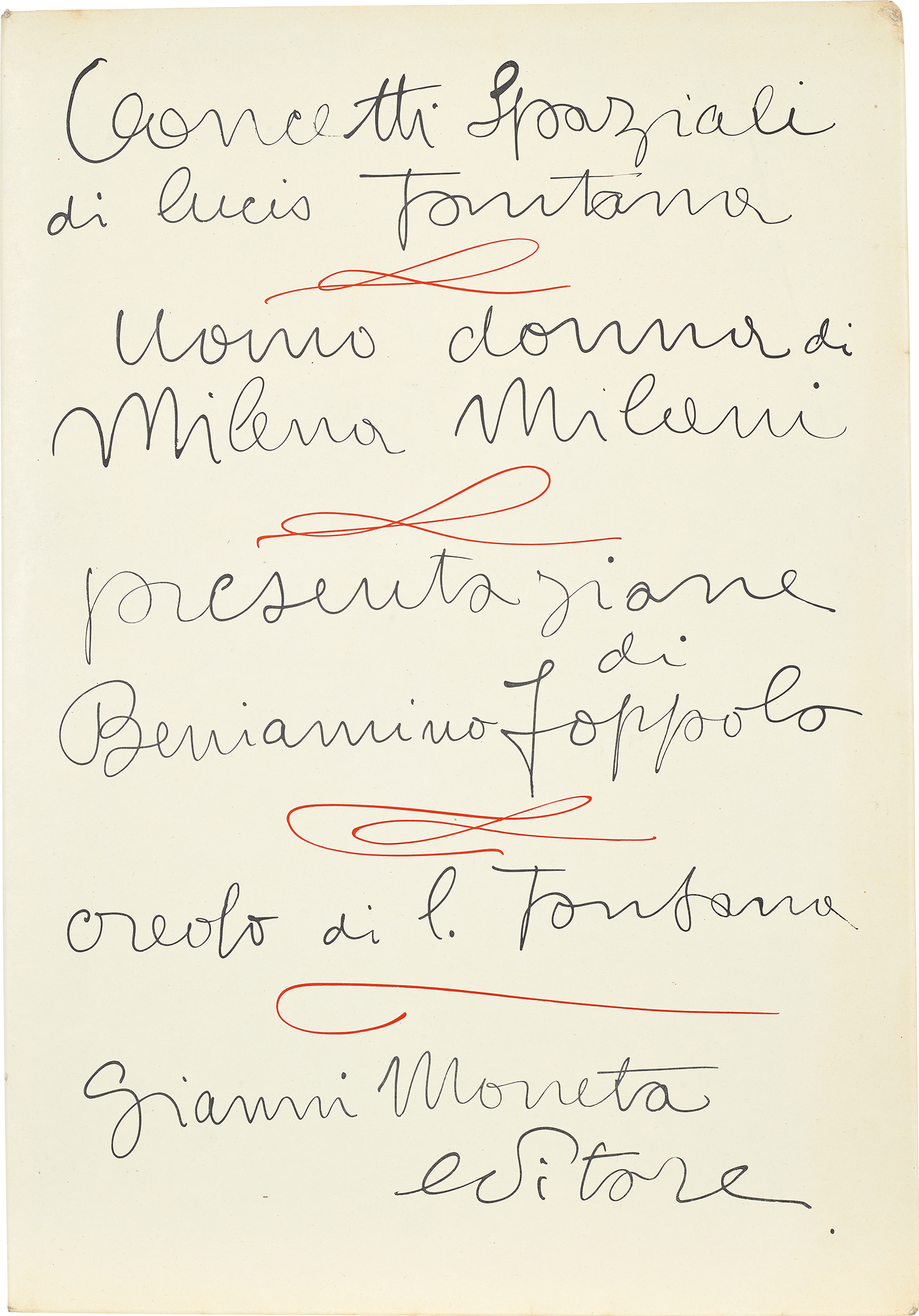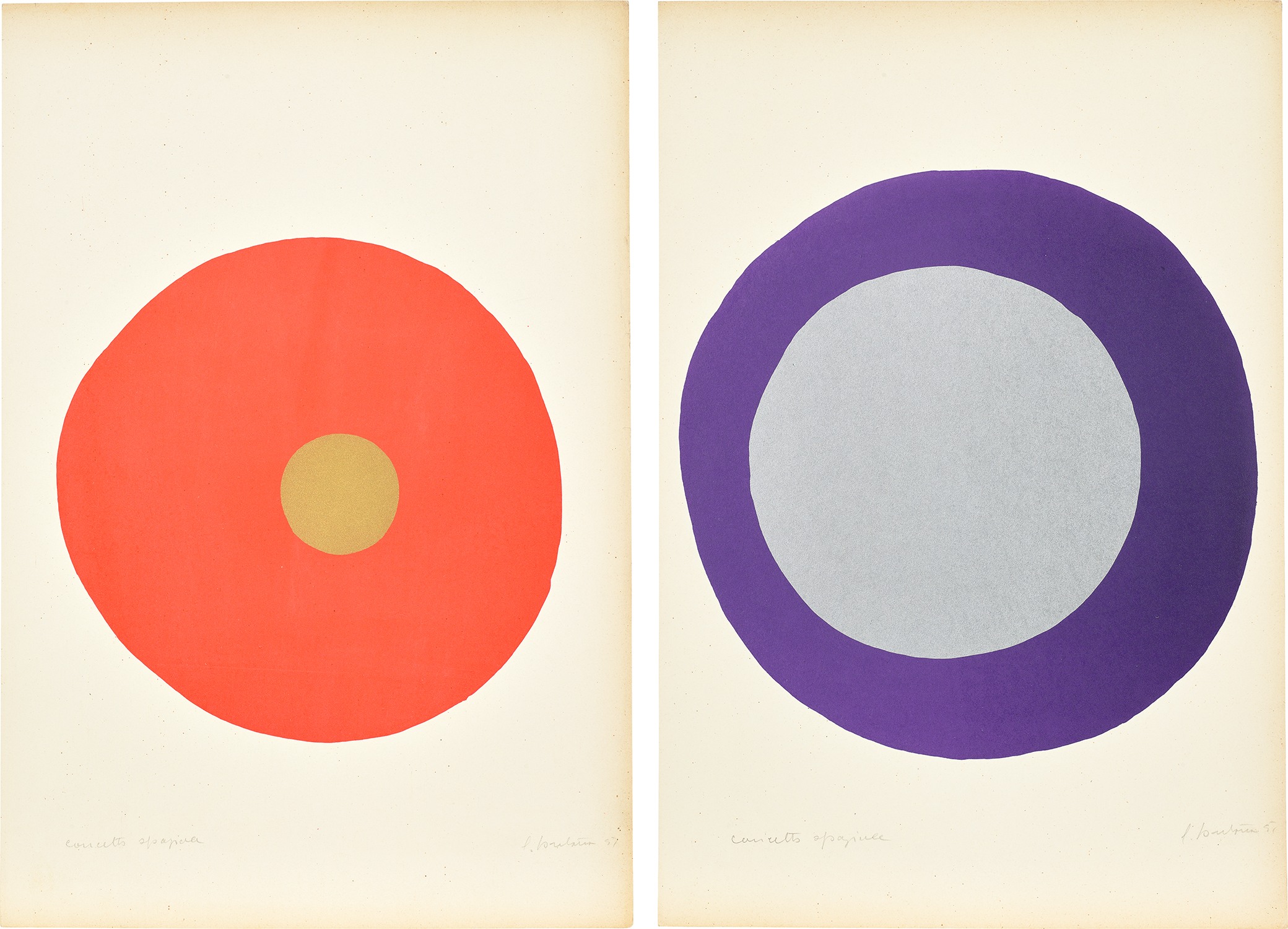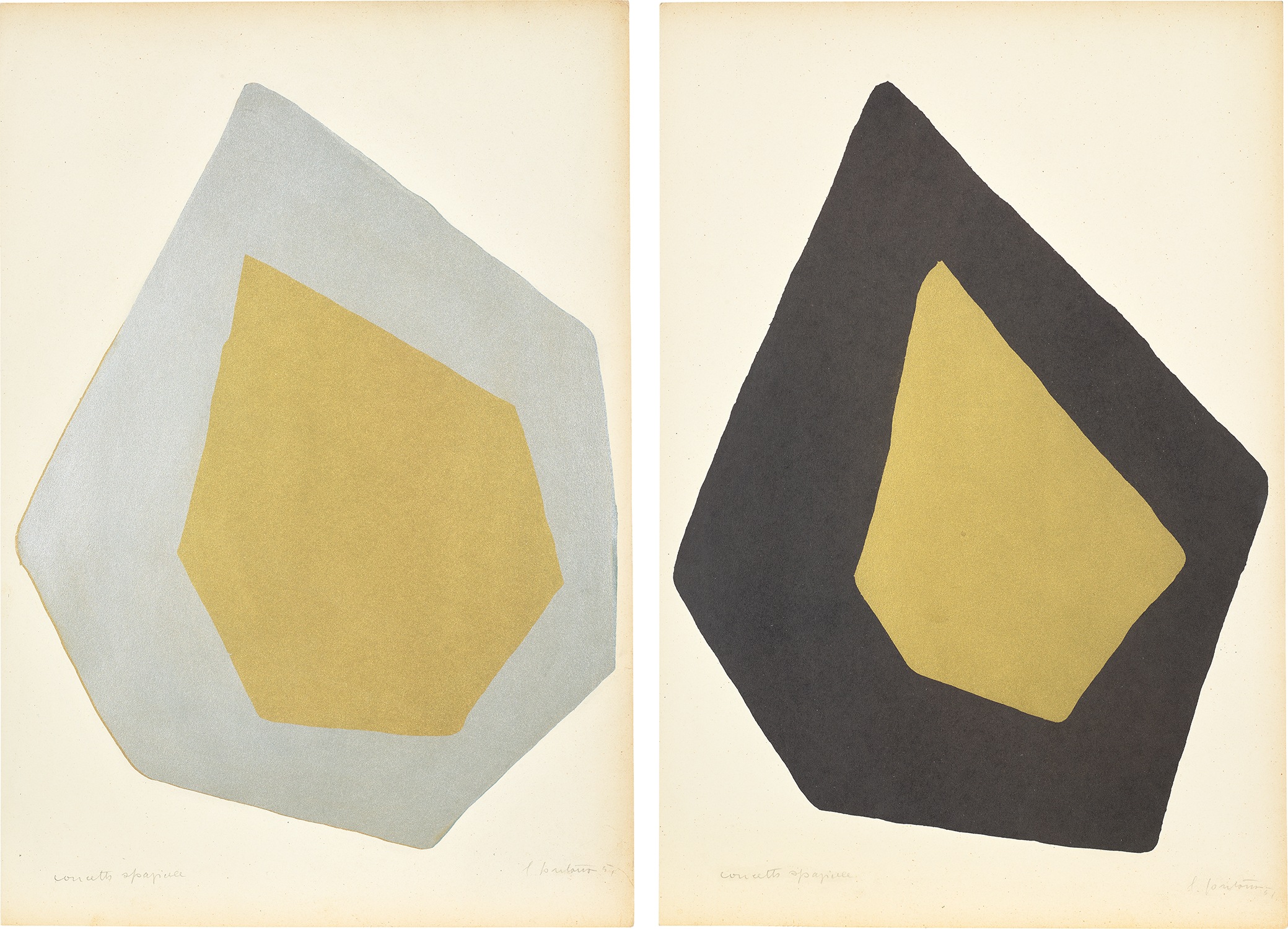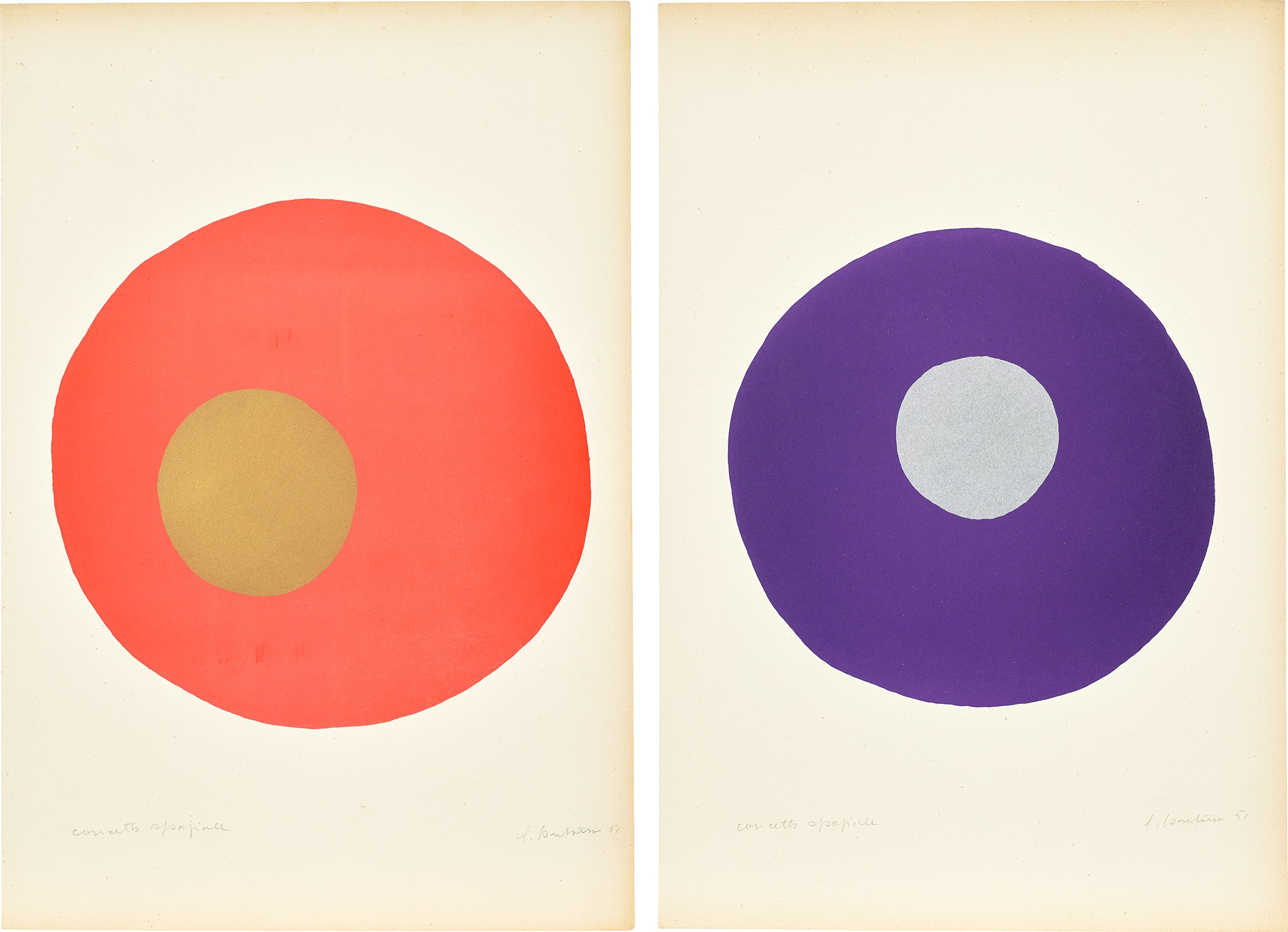









Property from a Private Swiss Collection
15
Lucio Fontana
Concetti Spaziali di Lucio Fontana (Spatial Concepts by Lucio Fontana) (R. & R. L-1:L-6)
1951
Six lithographs in colours with metallic inks, from the set of 7 (lacking L-7), on wove paper, with full margins, with title page, colophon and texts, the sheets loose (as issued) all contained in the original printed card portfolio.
all I. various, largest approx. 42.5 x 32 cm (16 3/4 x 12 5/8 in.)
all S. 49.7 x 33.9 cm (19 5/8 x 13 3/8 in.)
portfolio 50.4 x 35.2 x 1.2 cm (19 7/8 x 13 7/8 x 1/2 in.)
all S. 49.7 x 33.9 cm (19 5/8 x 13 3/8 in.)
portfolio 50.4 x 35.2 x 1.2 cm (19 7/8 x 13 7/8 x 1/2 in.)
All signed, titled and dated in pencil (plates L-3 and L-4 upside down), stamp-signed '40' on the colophon, from the edition of 100 (there were also 10 artist's proofs), published by Edizioni d'Arte Moneta, Milan, all unframed.